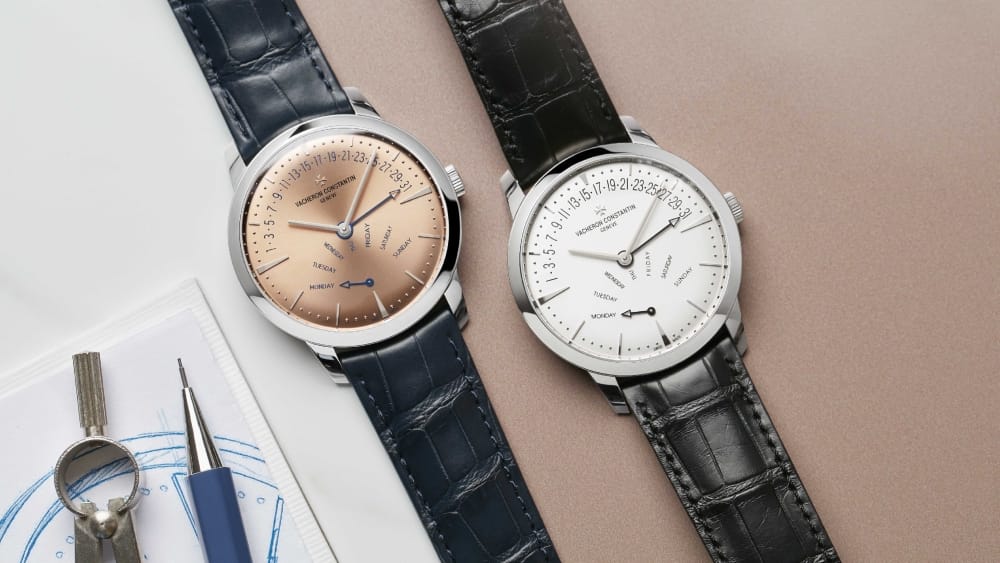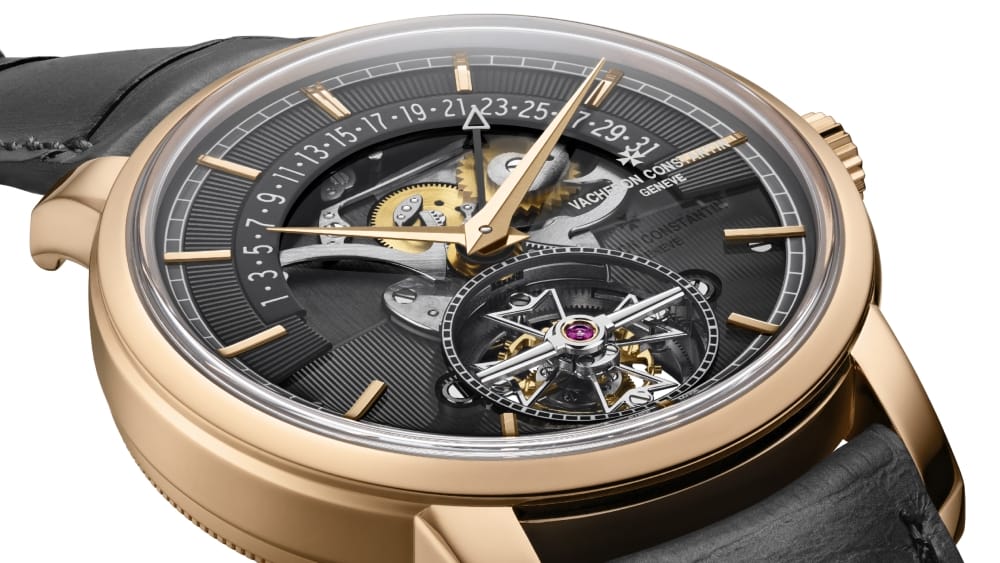Retrograde indicators are often appreciated but also overlooked, generally taken for granted as part of some other complication, concept or layout. But these types of indicators, whereby the hand does not make a complete revolution but instead jumps back to the start position—whether this is hour, minute,or date—comes with its own technical and layout considerations.
The 268-year-old Vacheron Constantin is no stranger to retrograde indicators, with the manufacture’s first jumping displays released by the early 1800s. They became in vogue during the 1930s when the brand became especially known for retrograde wristwatches. Christian Selmoni, Style and Heritage Director at Vacheron Constantin, is of the opinion that the main draw of retrograde in these early days was for the thrill of its animation, rather than practicality. “I can imagine that when you have a clock that is totally static, it looks like it’s not functioning,” Selmoni says. “Retrograde systems are really something—with retrograde hours, for example, every hour you will see the hand moving.” As far as modern wristwatches are concerned, he sees it as a legibility advantage. “I think you get really good readability, in addition to the pleasure of the flyback function,” he says, noting that a retrograde date might cover an entire half of a dial, making it easy to keep track of one’s progress throughout the month.

This is the case with all three of Vacheron Constantin’s new retrograde references, all of which contain a date indicator on the top half of the dial. They come in three flavours across three collections to suit a variety of tastes. The most traditional of these is—unsurprisingly, for fans of the brand—from the Patrimony collection. The format—42.5mm in diameter, slim at less than 10mm in thickness, and a self-winding movement that includes an additional retrograde day display at the bottom half of the dial—is not new, but the exact makeup of platinum case and salmon dial is. Although the gold versions of this watch remain as core offerings, this platinum reference of the Patrimony Retrograde Day-Day will be much more limited in production.

On the more contemporary front, the Overseas Moon Phase Retrograde Date may in fact be the first time a sports watch is outfitted with a retrograde indicator. In a familiar, robust 41mm guise of steel case and bracelet, it is introduced with the Overseas’ famously captivating dial of translucent blue lacquer over a sunburst-brushed base. One of the subtle adjustments that this model has made is that the minute track, usually printed in white, is instead in grey. This helps the retrograde markers and hands, which are in a light blue, stand out better.


Straddling the line of vintage and modern is the Traditionelle Tourbillon Retrograde Day-Date Openface. Traditionelle is a collection that also leans classical, and thoughmuch of it remains true to its roots, the dark grey dial with transparent sapphire window exposing the grey-finished movement within has one foot firmly planted in more modern territory. It is a look that debuted in 2019 with the Twin Beat Perpetual Calendar and has since been seen on the Complete Calendar Openface, and appears to becoming a Traditionelle signature. Presented in a 41mm pink gold case, the self-winding movement has a peripheral rotor so as not to obstruct viewing through the caseback, and has had the tourbillon carriage raised slightly to bring it level with the retrograde date indicator.


“I think it is very important, when you have such strong history and heritage, to maintain that link,” Selmoni explains of the brand’s decision to bring this classical complication to the current-day fore. “But it’s also important to be totally relevant in the 21st century.”




